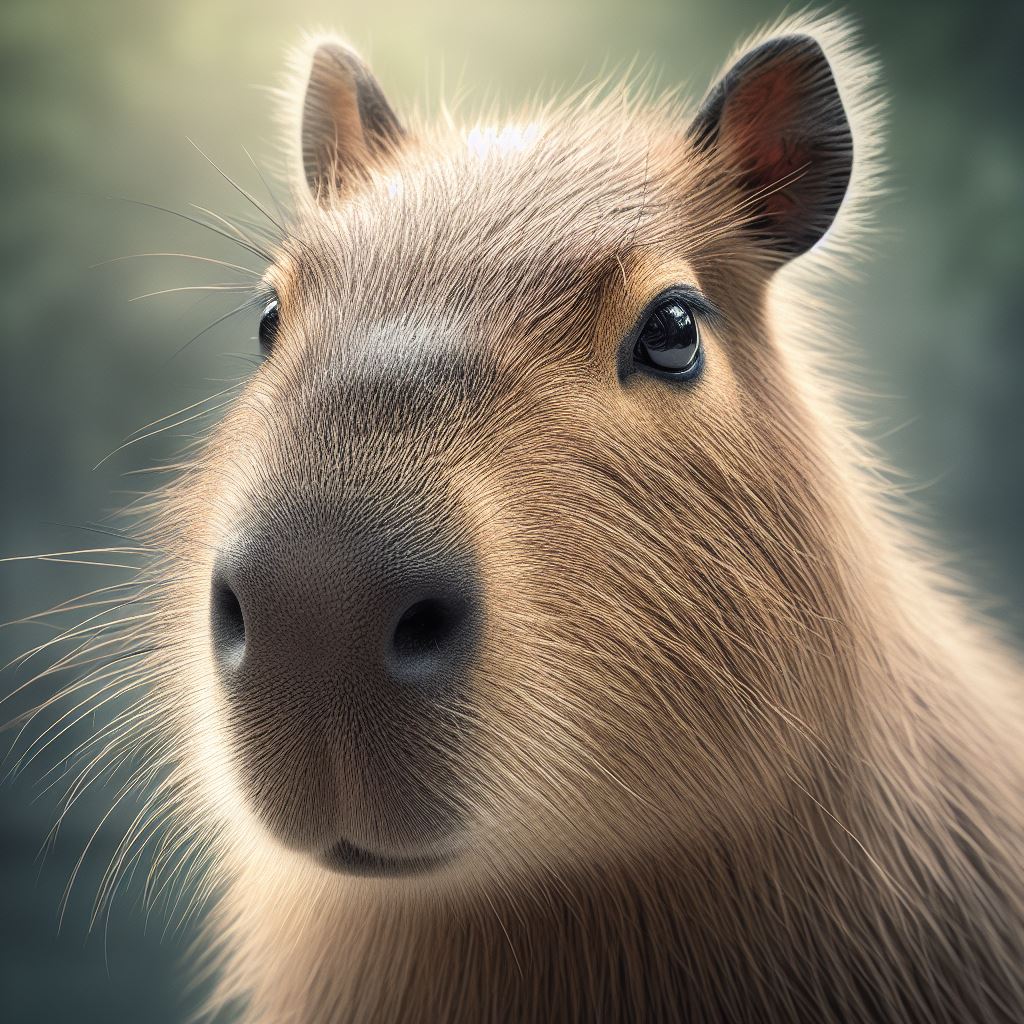Welcome, curious young explorers! Let’s discover some fun facts about sloths together. As renowned sloth scientists, we feel privileged to share our expertise on these charming, misunderstood creatures. There’s so much to appreciate about how sloths survive and thrive in their rainforest homes.
First, a quick overview of what makes sloths so unique. Found in the tropical jungles of Central and South America, sloths are mammals that live high up in the forest canopy. With large hooked claws, specialized gripping toes, and long limbs, sloths are expertly adapted to hang upside down from branches. Their fur features brown and green hues that camouflage them in the trees, hiding them from predators like harpy eagles.
But sloths aren’t just masters of climbing and hiding. Their most remarkable feature is their ultra-slow metabolism and lifestyle. Sloths have the lowest energy use of any mammal their size, allowing them to conserve resources in their challenging home. As a result, sloths move at an extremely relaxed, slow pace and sleep 15-20 hours per day, mostly at night. Their slow-motion existence helps them avoid predators and expend less energy.
![10 Fun Facts About Sloths for Kids - Surprising & Cute Info They'll Love! [Must-Read Guide]](https://factnight.com/wp-content/uploads/2023/11/10-Fun-Facts-About-Sloths-for-Kids.jpg)
Now that we’ve introduced these unique, adorable animals, let’s explore some fascinating sloth facts that kids will love discovering. From their sleep habits and specializeddiet to their impressive climbing abilities, we have so much to share about these captivating creatures. Grab your notebooks and let’s begin our rainforest expedition to observe sloths up close!
Main Facts About Sloths
Now that we’ve covered the basics, let’s dive deeper into sloth anatomy and behavior. There are so many cool adaptations that allow these creatures to survive in the treetops.
Appearance and Features
First, their appearance helps them expertly blend into the rainforest. Sloths have shaggy fur that ranges from light brown to grayish green. This helps camouflage them in the trees and provides a home for green algae that supplements their diet. Their round heads and perpetually smiling faces make them seem harmless.
But sloths have some not-so-cute features too! They have long, sharp claws up to 4 inches long that act like hooks for hanging onto branches. These claws also make formidable defenses against predators trying to knock them from their perches. Sloths only have 2 or 3 claw-tipped toes on each limb that form a strong grip around branches.
Sloths’ long limbs and specialized hip joints allow them to hang completely upside down for hours. In fact, they spend 90% of their lives suspended from branches by their strong claws and toes! Their flexibility helps them reach all the leaves and fruit they need to survive.
Fun Fact Break! The Pygmy Three-Toed Sloth only grows to the size of a small cat and is the world’s slowest mammal, moving at just 6.5 feet per minute!
Now, let’s explore sloth behavior and why they move so slowly. Sloths actually have quite powerful muscles but evolved to conserve energy since food is limited in their home. By moving slowly, they use up to 90% less energy than a typical mammal their size. Their low-energy lifestyle allows them to survive on relatively little food.
This concludes our overview of amazing sloth adaptations. Next we’ll learn about their rainforest habitat, diet, and more fascinating behaviors. Let’s continue our expedition through the trees!
Sloth Habits and Behaviors
Sloths’ unique adaptations allow them to thrive in their challenging rainforest homes. Let’s explore some of their fascinating habits and behaviors next.
One of the sloth’s most notable behaviors is its ultra-slow movement. Sloths climb through the trees at an average speed of just 2.5 cm per second, about 1/4 mile per hour! This is likely the slowest movement of any mammal. Their sluggish speed helps conserve their limited energy since fewer calories are burned. Their slow motion also provides excellent camouflage against tree bark and avoids detection by predators like harpy eagles.
Related to their slow movement is their incredible amount of sleep and inactivity. Sloths snooze up to 20 hours per day, mostly at night, and only wake briefly to feed for less than 10 hours. Their specialized circulatory system allows them to hang upside down and sleep so soundly without disrupting blood flow. Sloths even give birth while hanging in trees!
Fun Fact Break! Sloths can rotate their heads 270 degrees around due to extra vertebrae in their necks!
During their brief waking hours, sloths dine on a specialized herbivorous diet of tree leaves, particularly cecropia and ana trees. They also snack on fruits, buds, and shoots. The green algae growing in their shaggy fur provides added nutrients. Their slow digestion requires little energy, perfectly suiting their lifestyle.
Finally, sloths are generally gentle, harmless creatures despite their formidable claws. They are calm, quiet animals who keep to themselves high up in the canopy. Their natural smile gives them a friendly appearance. While not affectionate, they will tolerate human interaction if rescued or rehabilitated.
We’ve covered lots of cool sloth habits. Let’s forage on to learn about their rainforest homes next!
Sloth Habitats and Diets
Now let’s climb up into the magnificent rainforest canopy to better understand the sloth’s arboreal home and dietary habits.
Sloths are found exclusively in Central and South America’s tropical rainforests, particularly in Brazil, Peru, Colombia, and other equatorial regions. They thrive in tall, dense jungles with lots of vines, trees, and continuous canopy cover. This ecosystem provides them with abundant food sources and protection.
Remarkably, sloths can inhabit the rainforest canopy their entire lives without ever touching the ground! Using their hook-like claws, they crawl upside down along branches and laze in leafy tree tops completely hidden from predators below. Different sloth species prefer specific trees, like the cecropia and ana trees, that offer ideal food and camouflage.
Speaking of food, sloths have herbivorous diets consisting mostly of tree leaves. They prefer younger, more tender leaves that require less energy to digest. In addition to leaves, sloths nosh on fruits like figs, berries, and grapes when available. The green algae growing on their fur provides supplemental nutrients.
Fun Fact Break! The Maned Sloth has a specialized crackling call that sounds like a potato chip bag being opened!
Sloths have multi-part stomachs perfect for their leafy diet, similar to a cow’s digestive system. Their slow metabolism also requires less energy to digest a leafy meal. This perfectly suits their mellow, relaxed lifestyle.
Well team, we’ve now explored the curious sloth’s physiology, behaviors, and rainforest habitat. Let’s head back to base camp and reflect on these amazing, misunderstood creatures!
Threats to Sloths and Conservation Efforts
While sloths fascinate us with their endearing uniqueness, their populations face growing threats both in the wild and through illegal trafficking. Let’s explore some of the key risks sloths face today, and what we can do to protect them.
The biggest threat by far is habitat loss from deforestation across Central and South America. As rainforests are cleared for agriculture and development, sloths lose vital food sources and shelter that their arboreal lifestyle depends on. Only by preserving contiguous forests can we ensure sloths have access to the canopy habitat they need.
Sloths face higher risks of predation on the rare occasions they descend to the ground. Their limited mobility leaves them vulnerable to wild cats like jaguars and ocelots, as well as large snakes. Their best defense remains camouflage in the treetops. Education on sustainable development that preserves wildlife corridors between forests is crucial.
While sloths are currently classified as Least Concern by the IUCN, some species like the pygmy three-toed sloth are endangered due to habitat loss. Their specialized diets and habitats make them more vulnerable. Careful monitoring of population levels can help identify species at risk.
We can directly help sloths through donations to rescue and rehabilitation centers across Central and South America that take in injured and orphaned sloths. These facilities help nurse sick sloths back to health before rereleasing them into protected forests. They also fight illegal smuggling of sloths as pets.
Let’s continue working together to save these captivating creatures! Through rainforest conservation, wildlife protection policies, and public education, we can ensure sloths keep sleeping in the canopies for generations to come.

Fun Sloth Facts for Kids
Let’s wrap up our rainforest expedition by exploring some fun, fascinating sloth facts that kids will love! These unique mammals have many surprises in store for us.
Firstly, sloths can incredibly remain their entire lives in just one or a few home trees without ever touching the ground! Using their hook-like claws, they dangle from branches, sleep, eat, and even give birth mid-air. Some sloths descend from the canopy only once a week to poop in the same spot at the base of their tree.
Speaking of bathroom habits, sloths have extraordinarily slow digestion and only defecate about once a week. Their multi-chambered stomachs efficiently extract nutrients from leaves over many days. This slow but effective digestion perfectly suits their mellow lifestyle.
Fun Fact Break! Some male sloths perform a unique “dance” by bobbing their head, swinging their arms, and making melodic humming sounds to attract mates!
Baby sloths are completely helpless when born and must develop on their mother’s abdomen or back for safety. They cling tightly to their mothers nonstop for up to a year, learning essential skills like climbing using their hooked claws. Baby sloths are so small they can fit inside a human hand!
We hope you enjoyed discovering these fun sloth facts as much as we did! From the treetops to the forest floor, sloths have many endearing quirks. Next time you visit the rainforest, look up into the green canopy and see if you can spot one of these captivating creatures snoozing high above.

Conclusion
As we conclude our rainforest expedition, let’s recap what we’ve learned about these delightful, misunderstood creatures. Sloths have many unique adaptations that enable them to eat, sleep and live their whole lives high up in the canopy.
With their specialized claws, slow metabolism and camouflaged fur, sloths are wonderfully equipped to hang upside down from branches undisturbed. Their ultra-low energy lifestyle allows them to thrive on a limited diet of leaves, shoots and occasional fruits. Sloths evolved to live life in the slow lane, conserving energy as they sleep, eat and move through the trees.
We hope you enjoyed these fun sloth facts and learning about their rainforest habitat as much as we did! Sloths exemplify peaceful existence and remind us to appreciate life’s simple pleasures. They adapt perfectly to their environment without harming their ecosystem.
As forest conservationists, we feel protecting sloths and their rainforest homes connects us to the natural world. Teaching kids about sloths instills compassion and environmental awareness from a young age. Learning about their habits, habitats and behaviors makes us more invested in protecting endangered species.
So next time you hear leaves rustling in a rainforest canopy, look up! You might spot a smiling sloth munching leaves, oblivious to us below. By supporting conservation groups and zoos, we can ensure sloths keep sleeping, eating and breeding in their arboreal homes. Spread the word to keep these fascinating creatures lounging in rainforest trees for generations to come!

Frequently Asked Fun Facts About Sloths for Kids
Looking to learn more sloth fun facts? We’ve put together some common questions readers have about these charming rainforest mammals. Read on for more fascinating details about their lifestyle, habitat, conservation and more!
Q: How slow do sloths actually move?
A: Sloths move incredibly slowly, only about 40 yards per day on average. Their top speed is around 2-4 feet per minute. This sluggish speed allows them to conserve energy as they hang in rainforest canopies.
Q: How do sloths sleep while hanging upside down?
A: Sloths can sleep up to 20 hours per day while dangling due to specialized collar bones and vertebrae that allows blood flow to their head. Their claws also lock in place so they don’t fall.
Q: Why do sloths only poop once a week?
A: Sloths have very slow digestion and extract nutrients slowly over days due to specialized stomachs. So they only need to poop about once a week since their food digests so efficiently.
Q: What animals prey on sloths?
A: Harpy eagles, jaguars and snakes prey on sloths, especially young or sick/injured ones. But their camouflage and treetop habitat protect them. Only descending to the ground makes them vulnerable.
Q: How do baby sloths learn to climb and eat on their own?
A: For up to one year, baby sloths cling constantly to their mothers to learn skills like climbing using their claws and finding food. After a year, they become independent.
Q: What do sloths like to eat?
A: Sloths are herbivores, feeding mostly on specific tree leaves like cecropia. They also enjoy small fruits, buds and shoots. Some nutrients come from algae in their fur.
Q: How can I help protect wild sloth populations?
A: Support rainforest conservation groups, zoos/rescues rehabilitating sloths, and policies that preserve wildlife habitats. Avoid supporting illegal pet trade and only view sloths in authorized places.
Q: Where can I see sloths up close in person?
A: Many zoos have sloths, like San Diego and National Zoos. You may spot them in treetop canopies on rainforest tours in Costa Rica, Panama, Peru and other tropical regions where they live.
We hope these sloth facts answer some common questions! For more info, check out other animal articles or visit accredited zoos and conservation organizations. Enjoy learning about these fascinating rainforest creatures.





